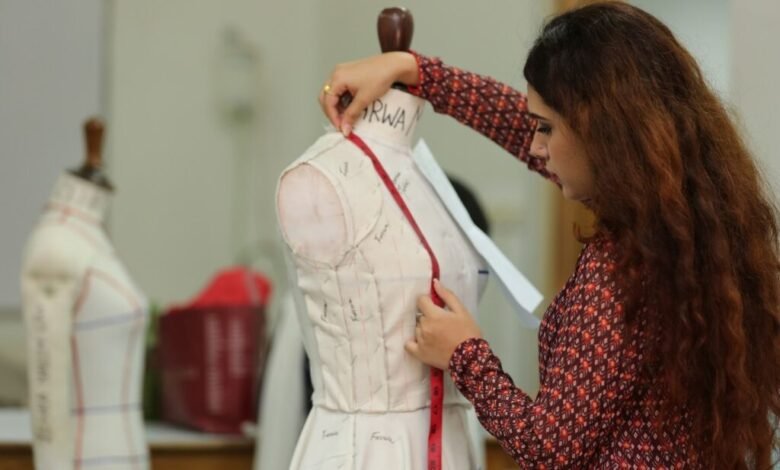How to Prepare for Your First Interior Design Class

Interior design improves interior environments for a better and more visually acceptable surrounding. It combines colors, furniture, lighting, and arrangement to create aesthetically pleasing spaces that serve purposes. Regarding customer preferences and pragmatic demands, the goal is to balance form and function. We also evaluate room architectural elements of interior design courses, physical restrictions, and planned usage of the area.
An interesting career where you may blend technical and artistic aspects is interior design. Knowing where to get the correct information can help you when you first start as many states and provinces in the United States and Canada want certification for you to register as a “certified interior designer.
Appreciating the Role of an Interior Designer
Interior design is the skillful arrangement of areas meant for the user. Consequently, professions in interior design are mostly people-centric and grounded on intangible feelings. Let’s explore the specifics of interior design services closer.
An interior designer is a specialist who specializes in designing and upgrading interior environments to increase their practical value and aesthetic appeal. Working with customers, they first identify their wants, preferences, and lifestyles; then, they create design ideas that honor those wishes while following safety guidelines and standards. When working with architects, builders, and other professionals to realize their vision, interior designers are adept at choosing materials, furniture, and color palettes.
Inside Designers Do?
Interior designers provide among their most sought-after services house interior design, kitchen interior design, bedroom interior design, office interior design, modern home interior design, modern house interior design, and maximalist interior design.
- Moreover, their range of activity and main obligations include the following.
- Visiting customers to learn their wants, preferences, financial situation, and project objectives.
- Creating floor designs and layouts to maximize flow and space utility.
- Choosing and sourcing furniture, fittings, fabrics, and finishes consistent with the design idea.
- Creating and monitoring project budgets guarantees that expenses stay within the client’s financial capacity.
- Collaborating with architects, contractors, and other experts to guarantee proper execution of design plans, supervising project management from start to finish, thus guaranteeing timely, within-budget delivery.
- Making sure designs follow all applicable construction laws and safety rules.
Indian Internal Designer Salary
Usually speaking, this spectrum fits fresh grads or individuals with less than two years of experience.
The typical internal designer pay for individuals with three to seven years of experience falls between ₹6,00,000 and ₹10,00,000 annually. Usually, this level comprises specialists with a strong portfolio and established customer contacts. This usually comprises those in management positions, those with specific knowledge, or specialists who have become very well-known in the business.
Which abilities qualify one to be an interior designer?
Candidates must be competent in technical understanding of the topic, software, and people skills to effectively acquire interior design employment. The following is a set of abilities interior designers require to find the solution in their career path.
Technical proficiency
Establishing functional workplaces largely rely on the ability to effectively plan and maximize space, including layout design and furniture arrangement.
Understanding and applying local building standards and guidelines can assist to ensure designs fulfil safety and legal requirements.
Knowledge of choosing and organizing lights to improve the utility and appearance of a room.
Analytical Techniques
Dealing with design problems and developing workable answers that satisfy project limits and customer demands depend on strong problem-solving skills.
Mastery of budget management—including cost projection and financial planning—helps to guarantee that projects are finished within their budgetary constraints.
Excellent attention to detail guarantees high-quality output by helping one see and fix any flaws before they become serious.
Creative aptitudes
A strong sense of style and knowledge of color theory, textures, and design trends help interior designers create aesthetically pleasing and coherent environments.
Creative thinking and innovation help designers create original and bespoke solutions reflecting the vision and tastes of the customer.
Maintaining and implementing current design trends into projects helps provide contemporary and relevant environments.
How to pursue interior design?
The main goal for aspiring interior designers is to strike a mix between theoretical ideas and practical design tricks. To present a well-rounded professional image, people should register for a formal degree in interior design along with online interior design courses. The following are the main requirements for qualifications necessary for interior design projects.
Key Skills
Starting your career as an interior designer will demand fundamental credentials that will equip you for success in the sector. One highly advised degree is in interior design, architecture, or a similar discipline. Usually covering basic subjects like design concepts, spatial planning, and materials science, these programs.
Strong abilities in visual communication—including mastery of drawing and design tools—are also vital. Attracting potential customers or companies depends on building a strong portfolio highlighting your technical skills and inventiveness. Given the competitiveness of the profession, a degree from a reputable university may help you.
Certified Classes and Internships
Beyond your official schooling, earning interior design certificates will boost your qualifications and show your dedication to the field.
Since they provide practical experience and insight into the daily tasks of an interior designer, internships are just as vital. Working with reputable design companies will let you engage on actual projects, choose industry best practices, and network professionally. It will allow you to use theoretical knowledge in a useful environment, get comments, and improve your abilities. Covering all facets of interior design, this program—one of the most thorough courses available—includes Design theory, space planning, lighting, color, and furniture design, among the curricular subjects. Online delivery of the course lets students study at their speed. It also features individual advice and comments from expert interior designers acting as mentors. Those looking for advanced interior design education will find a great fit for this certificate.
Conclusion
Participating in interior design courses certifications allows one to pick up fresh tools, knowledge, and software. Modern technologies, including artificial intelligence (AI), virtual reality (VR), building information modeling (BIM), and augmented reality (AR), have further opened the door to several job routes. These tech-first specialties may bring worldwide employment possibilities right to your door and provide highly paid career opportunities as interior designers.



